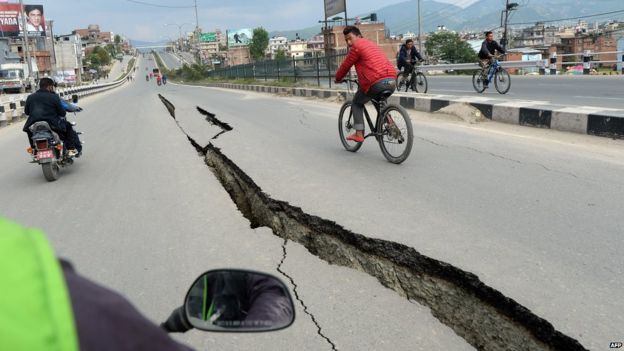What the Nepal Earthquake teaches us
The recent earthquake of Nepal will certainly go down the annals of history as one of the most devastating quakes. With a death toll that estimates a figure of 6204, the figure is only a rough estimation- there maybe thousands still trapped, and who are desperately looking for help. These natural calamities cannot be predicted beforehand, and as such we cannot take concrete steps to win the battle against Mother Nature herself. Although the situation does seem really gloom, there are a few things that we can (and should) learn.
The Government of India must be praised for their sincere effort to help and rescue not only its citizens, but also people of foreign nationality in Nepali soil. The Indian Air Force had dispatched aid and rescue workers on the quick prompt of the government, reportedly within fifteen minutes of the catastrophic tragedy that struck Nepal.
#5: Nothing stands before Nature's fury
A 7.8 magnitude earthquake releases enough energy equable to 712 Hiroshima-class bombs put together. That's a ton-load of energy that would destroy everything in it's path. A city would be a speck of dust, had it been even more shallower at a depth of less than 1.5 km from the ground surface. Fortunately, the depth of the earthquake was about fifteen kilometers, which, seismologically is a quite low depth for earthquakes to occur at. Wonder why rubble stands everywhere? There are no competitors to the Earth's tectonic power. Hands down.
#4: Greed is bad
Cheap things do not add to value, and all that glitters is not gold. These are old sayings that have endured the test of time. It holds true to today's scenario as well- constructors and promoters have, for all these past decadal years, added to their profits neglecting the aspect of safety of the buildings constructed. Such negligence merely takes the lives of innocent people that dwell in the residential properties. There's no dollar when you sell a gold-painted ornament as a pure gold ornament.
Buildings can be reinforced with proper engineering projects that can be undertaken in the future for renovation of old buildings.
#3: Preventive measures
The Kathmandu valley is one of the most vulnerable zones for getting struck by earthquakes. The epicentre was a mere 77 kms North-West of the capital city of Nepal. The Himalayas being a young-fold mountain belt remains a active region in terms of tectonic movement. A big one was anticipated, but no one knew where it would be and how large would it be. The last severe tectonic upheaval took place in 1934, which is known as the Nepal-Bihar earthquake. It was not too difficult to realize that strain had been building up ever since that point of time. Buildings could have been prepared to be earthquake-resistant to reduce the severity of the impacts.
#2: Density matters in mountainous terrain
The more the population density, the more damage will a city suffer. Kathmandu and Pokhara serve to be good examples for this principle. Last year, in the Kedarnath floods, population density being more in the Kedarnath valley, led to loss of thousands of lives. History does seem to repeat itself again, and that is precisely the case in the deadly earthquake.
Kathmandu being the capital of Nepal, has a population density of 13,225 per square kilometer, which is statistically the double of London.
Kathmandu being the capital of Nepal, has a population density of 13,225 per square kilometer, which is statistically the double of London.
#1: Spread Awareness
The shocking fact is that most do not know how to react to an earthquake. Yes, they do run frantically out of their homes, but pragmatically, that alone cannot save from the brutal power of an earthquake onslaught. There are several guidelines and do's & don'ts released by international organizations that pioneer in such fields. Such guidelines can be taught at elementary levels in schools to raise primary awareness about the issue and why it matters such a lot.
No one likes death tolls counting, but unfortunately, at this present juncture, we are not sure of the total number of casualties. We can only pray and hope that the people of Nepal remain safe, and can assure the Nepali citizens that their brothers and sisters in India are worried on an equal level, too.






Comments
Post a Comment